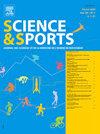功能训练如何增强大学生体质:综合评价
IF 0.8
4区 医学
Q4 SPORT SCIENCES
引用次数: 0
摘要
目的功能训练作为专业康复运动障碍治疗的一种手段,对大学生功能训练的效果研究较少。这篇全面的综述旨在阐明这一被忽视的话题,并呼吁认识到大学生功能训练的重要性。方法以“功能训练”、“力量训练”、“大学生”、“功能运动屏幕”为主要标识符,集中检索PubMed、Web of Science、Scopus等认证平台的出版物,建立文献库。特别注意定量实验研究。结果247篇论文中有3篇符合纳入标准。总的来说,研究考察了162名参与者在四种类型的功能训练中的表现,即12周功能训练策略(FTS), 12周功能力量训练(FST), 8周混合健身(CF)和战术战争训练(TWT),主要由身体状况良好的大学生组成。与传统运动训练相比,FTS在FMS得分上有5.61分的优势,在运动成绩上有23.12分的优势。传统运动训练FMS总分优化3.20分,运动成绩提高16.75分。FST对大学生FMS总分有显著的正向影响(P <;0.05),平均分从13.68分提高到16.63分。CF和TWT都能有效地帮助大学生维持身体成分,提高肌肉力量和耐力。俯卧撑(重复):30.8±13.2 (CF), 26.0±11.2(行);蹲(重复):41.7±8.5 (CF), 39.8±8.0(行)。结论功能训练在提高运动员FMS分数和运动成绩方面具有显著优势。在增强大学生身体机能、降低肌肉骨骼损伤风险方面,它比传统方法更有效。目的:研究进入本文章由计算机程序翻译,如有差异,请以英文原文为准。
How functional training builds up the physique of university students: An integrated review
Objectives
Functional training, being a means for professional rehabilitation movement disorder treatment, has been less studied of its effects on university students. This comprehensive review is aimed to shed light on this much-neglected topic and call upon recognition of the significance of functional training for university students.
Approaches
The authors built up the literature library via concentrated search using “functional training”, “strength training”, “university students” and “functional movement screen” as main identifiers for publications on certified platforms such as PubMed, Web of Science and Scopus. Attention was specifically given to quantitative experimental studies.
Outcomes
Three out of the 247 papers searched stood out in meeting the inclusion standards. Collectively, the studies examined the performance of 162 participants, mainly composed of university students in good physical conditions, in four types of functional training: 12-week functional training strategies (FTS), 12-week functional strength training (FST), 8-week CrossFit (CF) and Tactical Warfare Training (TWT). Compared with traditional sports training, FTS showed an advantage of 5.61 points in FMS score and a 23.12-edge in sports performance. The total FMS scores of traditional sports training was optimized by 3.20 points, and sports performance was improved by 16.75. FST created a significantly positive impact on the total FMS score of university students (P < 0.05), elevating the average score from 13.68 to 16.63. Both CF and TWT effectively helped university students maintain body composition and improve muscle strength and endurance. Push-Ups (repetitions): 30.8 ± 13.2 (CF), 26.0 ± 11.2 (TWT); Squats (repetitions): 41.7 ± 8.5 (CF), 39.8 ± 8.0 (TWT).
Conclusion
Functional training has shown significant advantages in generating higher FMS scores and better athletic performance. It is more effective than traditional methods in enhancing the physical function of university students and reducing the risk of musculoskeletal injury.
Objectifs
L’entraînement fonctionnel, en tant que méthode professionnelle de traitement des troubles du mouvement en réadaptation, a été moins étudié pour ses effets sur la condition physique des étudiants. Cette revue intégrée vise à éclairer cet aspect souvent négligé et à mettre en avant l’importance de l’entraînement fonctionnel dans le contexte universitaire.
Approches
Pour constituer la bibliographie, l’auteur a mené une recherche ciblée en utilisant des termes clés pour les publications tels que « entraînement fonctionnel », « entraînement en force », « étudiants » et « évaluation du mouvement fonctionnel » sur des plateformes certifiées telles que PubMed, Web of Science et Scopus. Une attention particulière a été portée aux études expérimentales quantitatives dans ce domaine.
Résultat
Trois des 247 articles examinés se sont distingués en satisfaisant aux critères d’inclusion. Dans l’ensemble, ces études ont évalué les performances de 162 participants, principalement des étudiants en bonne forme physique, à travers quatre types d’entraînement fonctionnel : stratégies d’entraînement fonctionnel sur 12 semaines (FTS), entraînement fonctionnel en force sur 12 semaines (FST), CrossFit sur 8 semaines (CF) et Entraînement tactique de guerre (TWT). Par rapport à l’entraînement sportif traditionnel, FTS a démontré un avantage de 5,61 points au score FMS et une amélioration de 23,12 en performance sportive. Les scores FMS totaux pour l’entraînement sportif traditionnel ont été optimisés de 3,20 points, tandis que la performance sportive a progressé de 16,75 points. Le FST a exercé un impact significativement positif sur le score FMS total des étudiants (p < 0,05), faisant passer le score moyen de 13,68 à 16,63. Tant le CF que le TWT ont contribué efficacement à maintenir la composition corporelle des étudiants et à renforcer leur endurance musculaire. Pompes (répétitions) : 30,8 ± 13,2 (CF), 26,0 ± 11,2 (TWT) ; squats (répétitions) : 41,7 ± 8,5 (CF), 39,8 ± 8,0 (TWT).
Conclusion
L’entraînement fonctionnel s’est révélé être un outil efficace en produisant des scores FMS supérieurs et en améliorant la performance athlétique des étudiants. Il surpasse les méthodes traditionnelles en matière d’amélioration de la condition physique et de réduction des risques de blessures musculo-squelettiques chez cette population spécifique.
求助全文
通过发布文献求助,成功后即可免费获取论文全文。
去求助
来源期刊

Science & Sports
社会科学-运动科学
CiteScore
1.50
自引率
18.20%
发文量
143
审稿时长
19.7 weeks
期刊介绍:
Science & Sports is a peer-reviewed journal, publishing worldwide high-quality and impactful papers of medical, scientific and applied technical research in the different fields of sports and physical activities: sport medicine, exercise physiology, sport physiology and performance, nutrition, traumatology relating to sport, rehabilitation or adapted physical activities. It facilitates the transfer of knowledge and technology between the clinic, research and practice in physical and athletic activity.
 求助内容:
求助内容: 应助结果提醒方式:
应助结果提醒方式:


